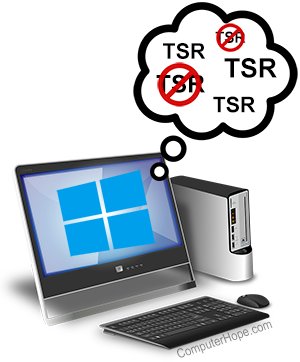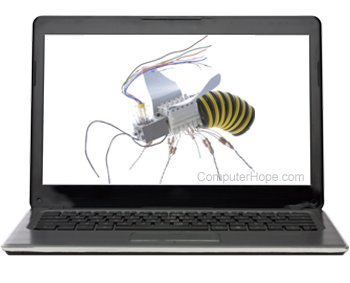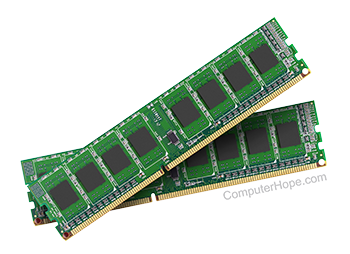What to do if my Windows computer starts slow?

A slow or long Microsoft Windows startup (boot up) can be caused by many different issues. This page contains various suggestions and tips to help improve the overall speed of your desktop or laptop computer's startup or reboot process, making it faster.
This page only covers a slow booting computer. To fix a computer that's running slow overall, see: My computer is running slow, what steps can I do to fix it?
If you use your computer frequently, consider not turning it off or having your computer enter hibernation mode when pressing the power button, rather than shutting down to conserve power.
Disable startup programs

Programs that load as the computer starts up remain active in its memory. Consequently, they are one of the main causes of a slow boot to Windows. Disabling programs you don't often use from automatically loading up each time the computer powers on can decrease boot time.
ScanDisk and Defrag
Using Microsoft ScanDisk and Defrag or similar disk utilities help verify your hard drive is running free of errors while organizing stored data in the most efficient manner possible. We suggest running both utilities at least once every few months.
Virus and malware infection

If your computer has a virus or malware infection, it can affect how fast Windows loads on startup. Some viruses and malware can directly impact Windows system files, causing them to load or run very slowly, or fail to run at all. Other viruses and malware can create hundreds or thousands of dummy, temporary files that fill up the hard drive space, making it difficult for Windows to load properly and efficiently.
If you have an antivirus program, run a scan and remove any infections that are found. We also suggest performing this task in Windows Safe Mode, as some viruses may evade programs running in the normal mode of Windows.
If you don't have antivirus software installed on your computer, you can use the built-in Windows virus and threat protection tool or a free utility like Malwarebytes. You can also run a virus and malware scan using an online tool, like Trend Micro's HouseCall.
Insufficient hard drive space

For your computer to run optimally, we recommend to have at least 15% free disk space for a standard hard drive or 25% free disk space for an SSD (solid-state drive). If you have less than this amount, a slowing in general performance and boot time can occur.
For example, if you have a standard hard drive with a total disk space of 500 GB, having at least 75 GB of free space available is recommended. With a 500 GB SSD, having at least 125 GB of free space available is recommended for better boot times and overall performance.
Update drivers and Windows
Corrupt, incorrect, or out-of-date drivers can cause many different issues. Make sure your computer has the latest hardware drivers and install any available Microsoft Windows updates.
Registry cleaner
Although we do not often recommend registry cleaners, in some situations, they help improve the overall performance of Windows, including startup. If you ran through all the recommendations above with minimal startup speed improvement, you may want to clean your system registry.
Format and reinstall
Although the process is a bit time consuming, you may want to erase everything from the computer and reinstall Windows. Reformatting your storage device makes your computer run like it did when it was new.
Hardware upgrades
We saved these options for last because they have a user cost associated with them. That said, they are some effective ways to increase performance and decrease boot times.
Adding RAM

Installing additional RAM (random-access memory) in a computer helps increase the overall speed of the computer, and in some cases, it can decrease the boot times. If your computer is running less than two gigabytes of RAM, it's highly recommended you add more. For Windows 10 and Windows 11, we recommend having at least 4 GB of RAM.
Adding a solid-state drive
An SSD is the most effective way to raise performance across the board for any computer. On both desktop and laptop computers, moving Windows from a standard hard drive to a solid-state drive dramatically lowers your boot times. Amazon.com has a full array of SSDs.
Upgrading the CPU and motherboard

While being the most costly to upgrade, a faster CPU (central processing unit) and compatible motherboard can improve boot times and overall performance of your computer. If a computer's CPU and motherboard are more than four years old, an upgrade decreases how long it takes for your computer to load Windows.
If you have a laptop, upgrading the CPU and motherboard is usually very costly, if an option at all. With laptops, purchasing a new machine is usually the better choice, and sometimes is cheaper than a CPU and motherboard upgrade.
Defective hardware
If your computer has a defective piece of hardware, it can cause computer startup problems and other issues. For example, if the power supply is not delivering enough power to the hardware components, the computer can't function properly and may start up very slowly. A bad hard drive can cause system files to become corrupted or lost, resulting in long boot times.
We recommend running hardware diagnostic tests to determine if any hardware in the computer is defective and needs to be replaced.
